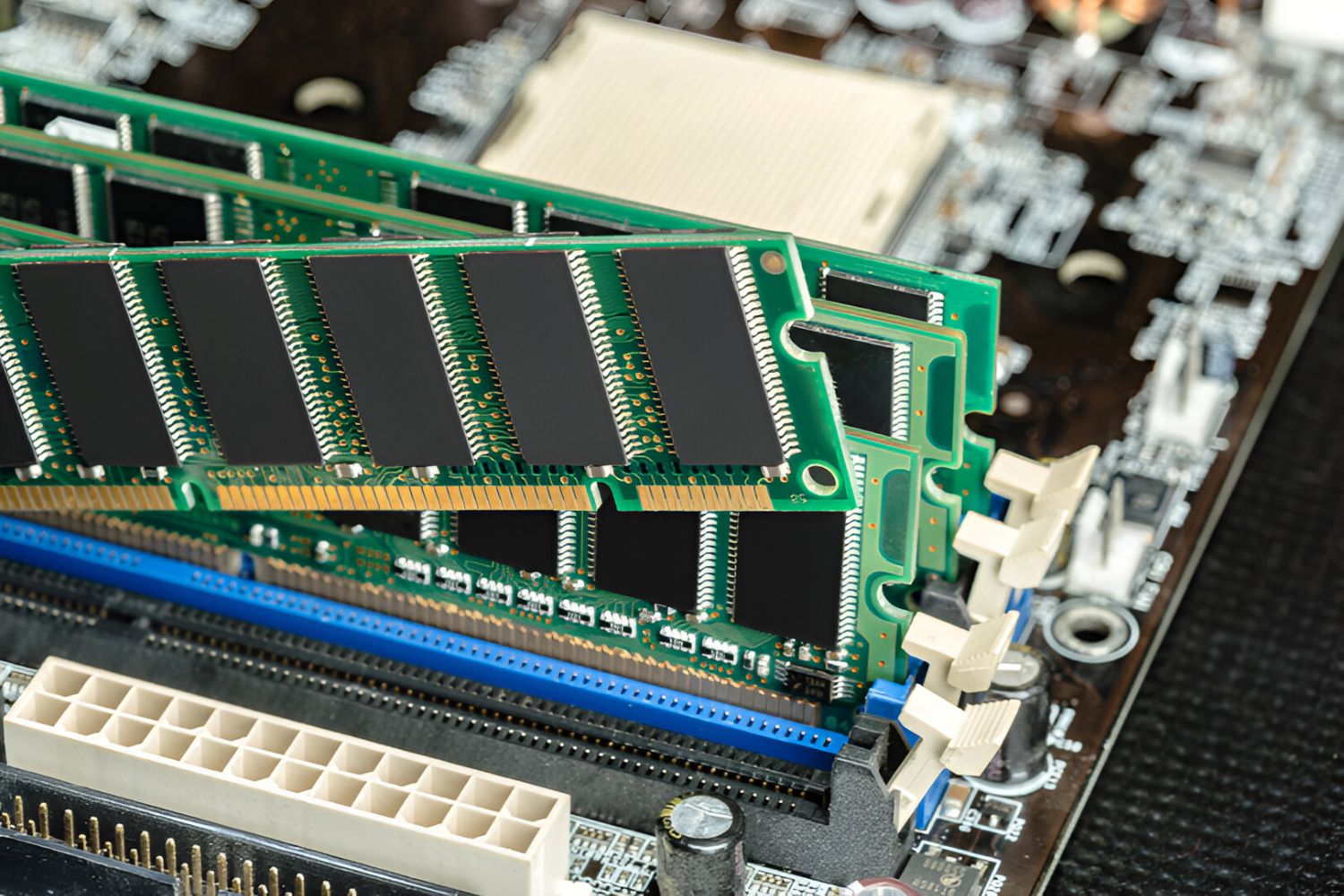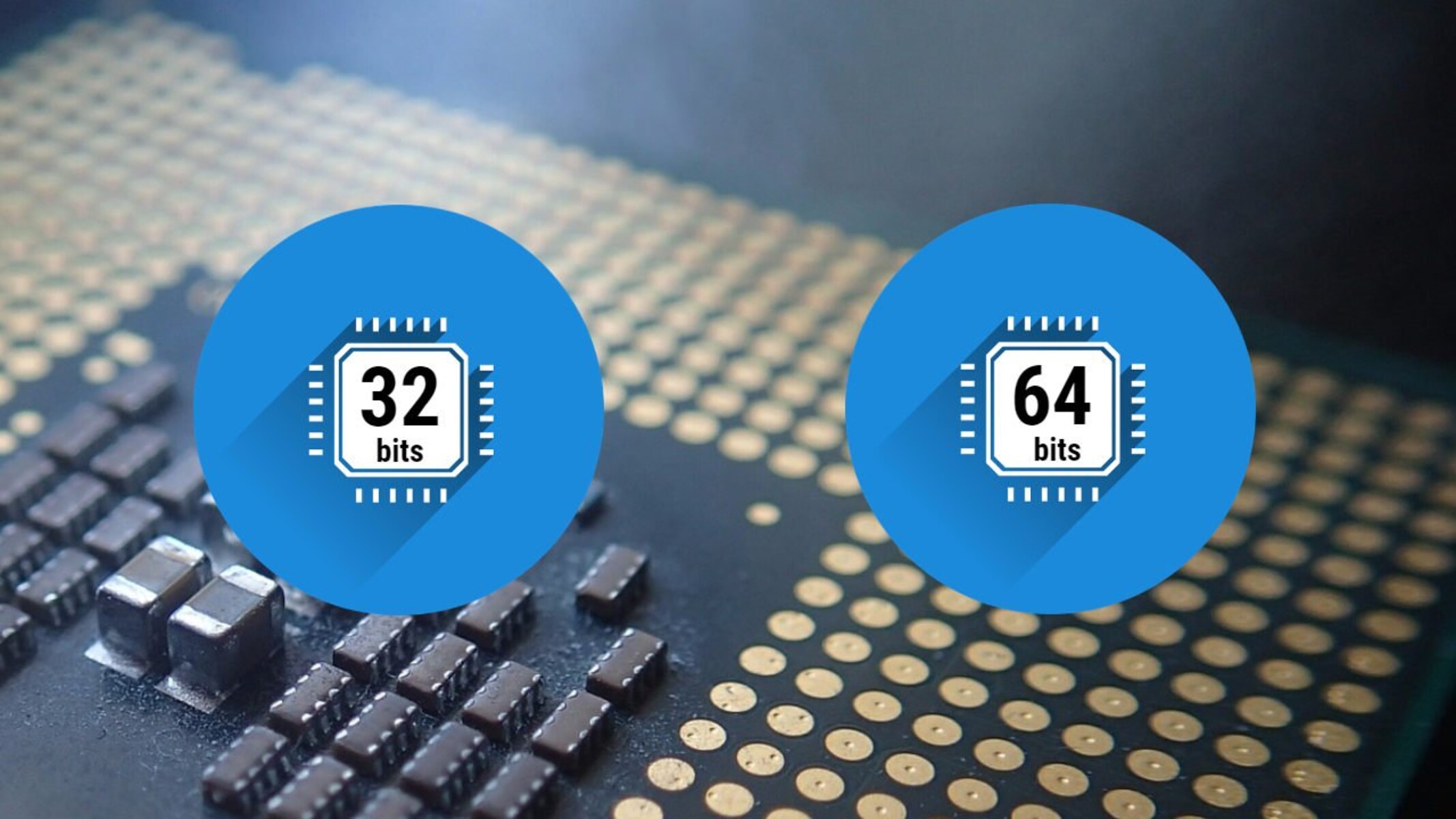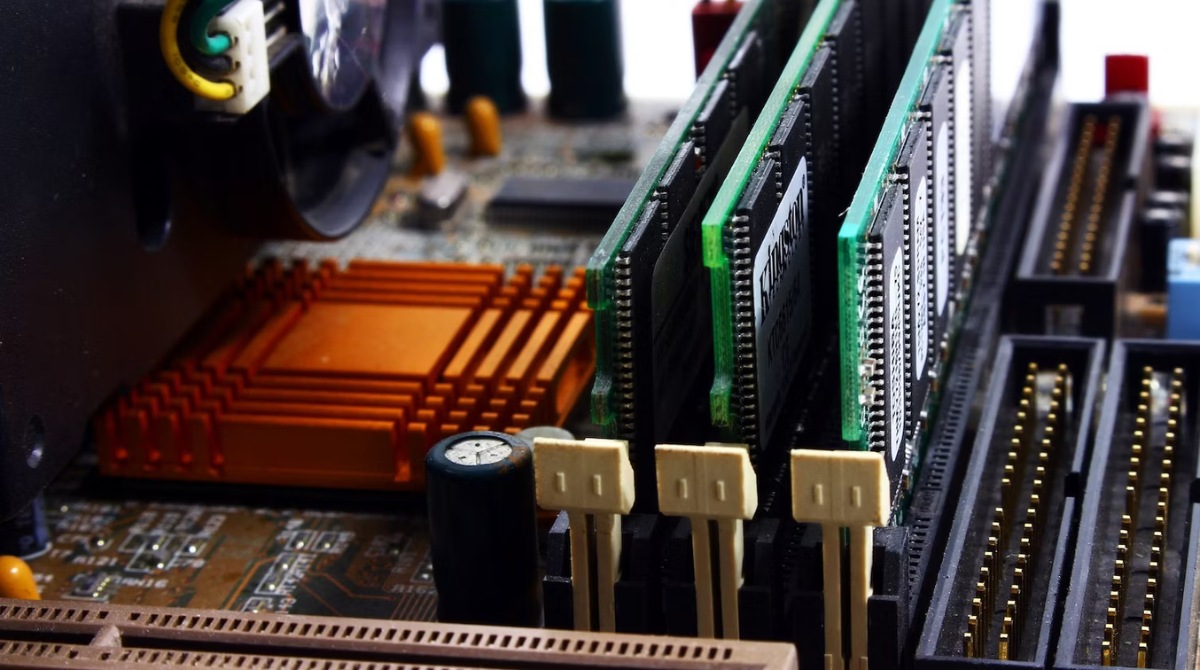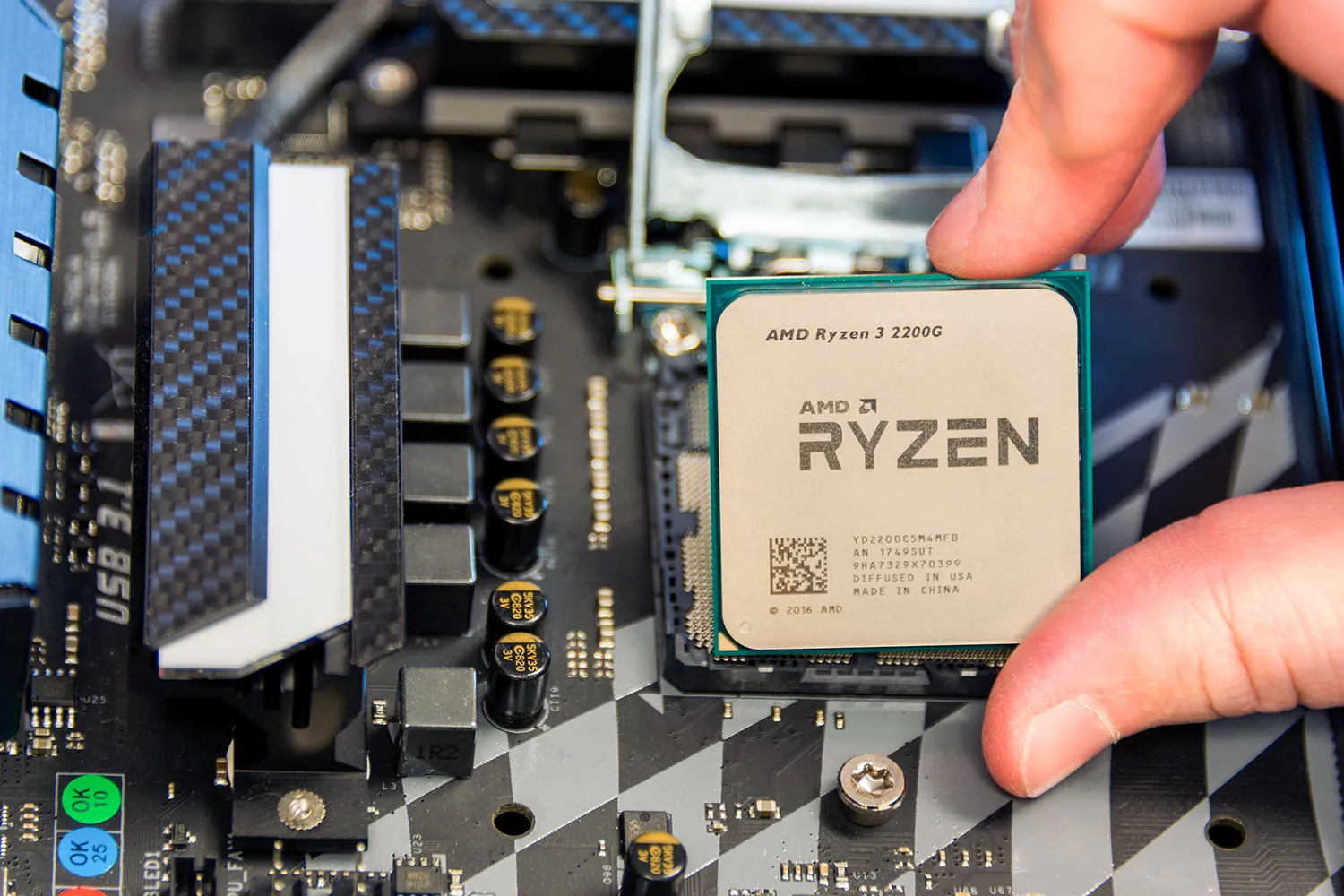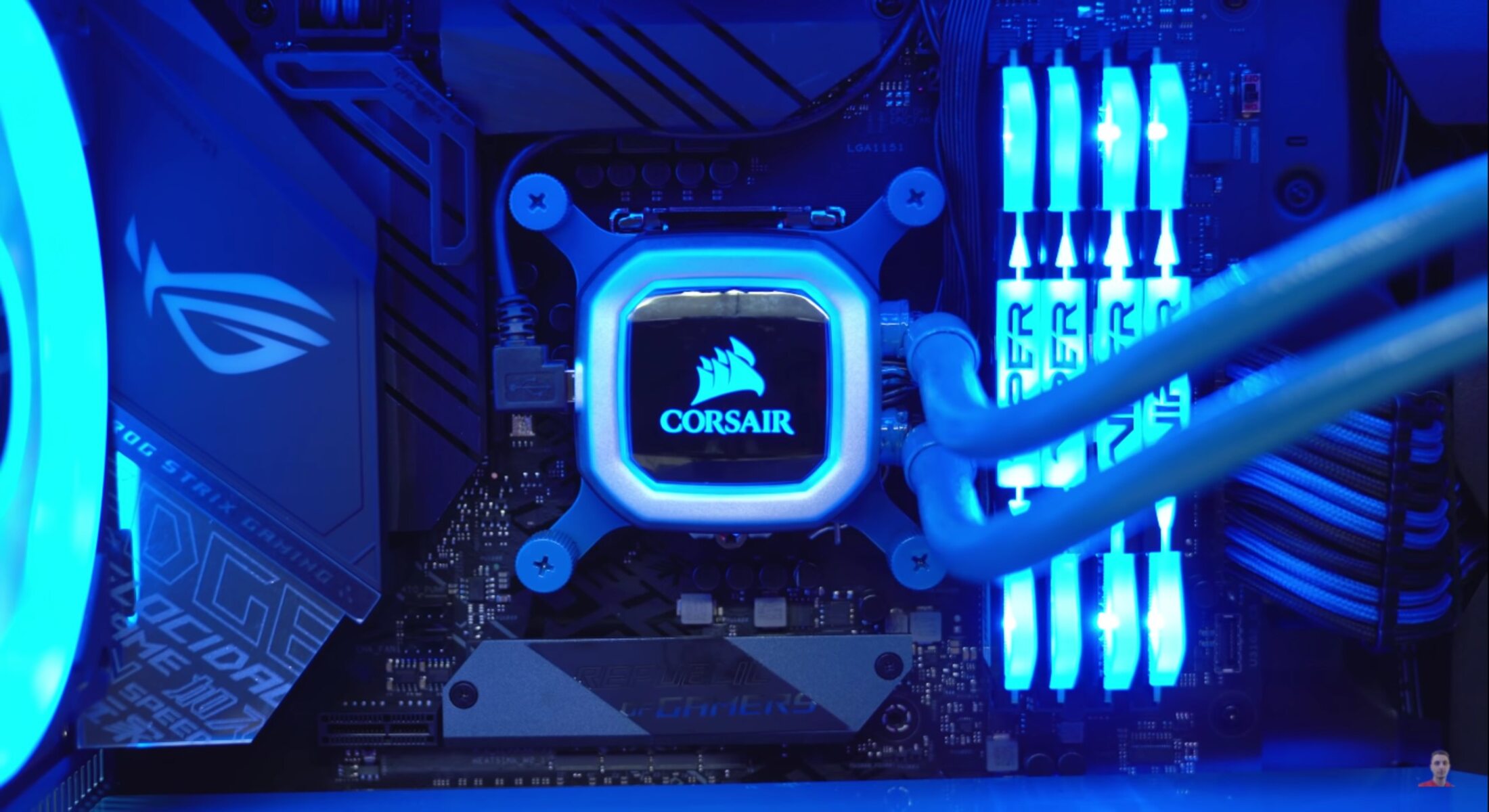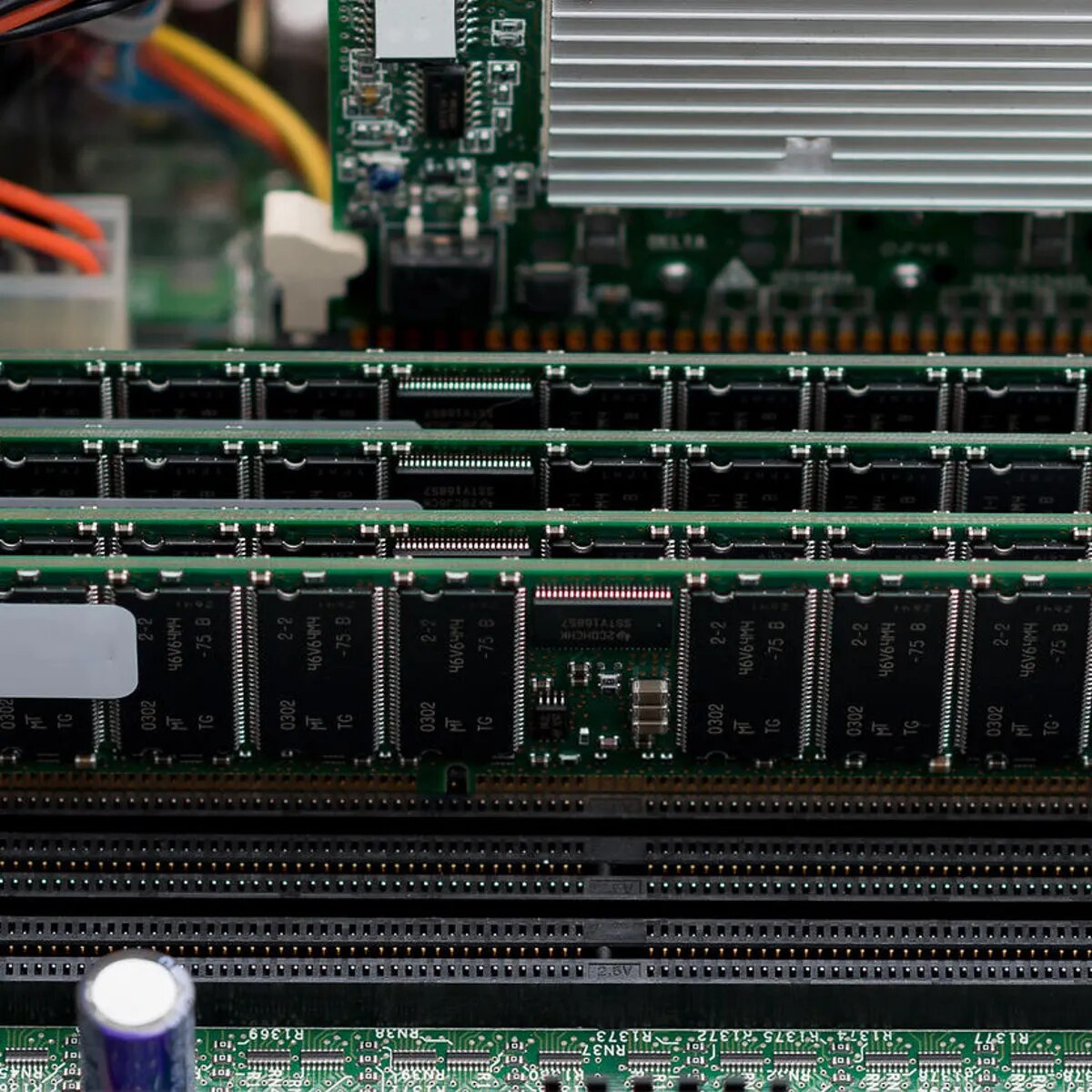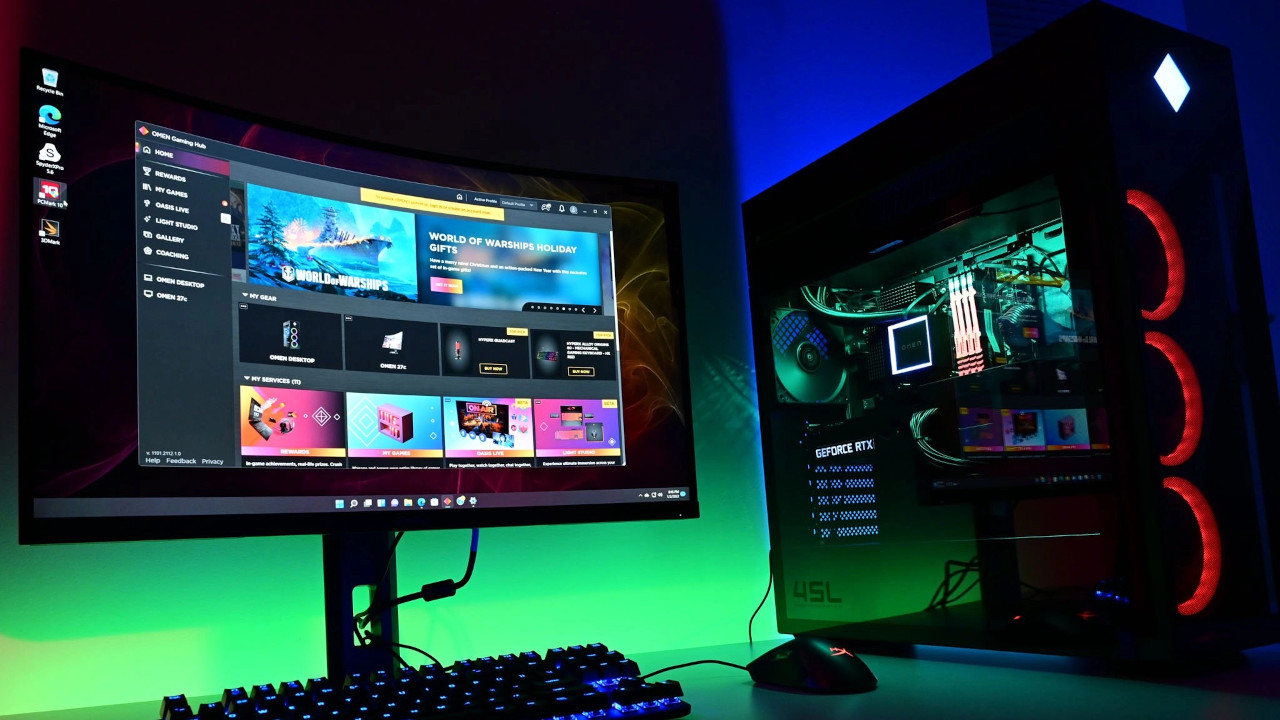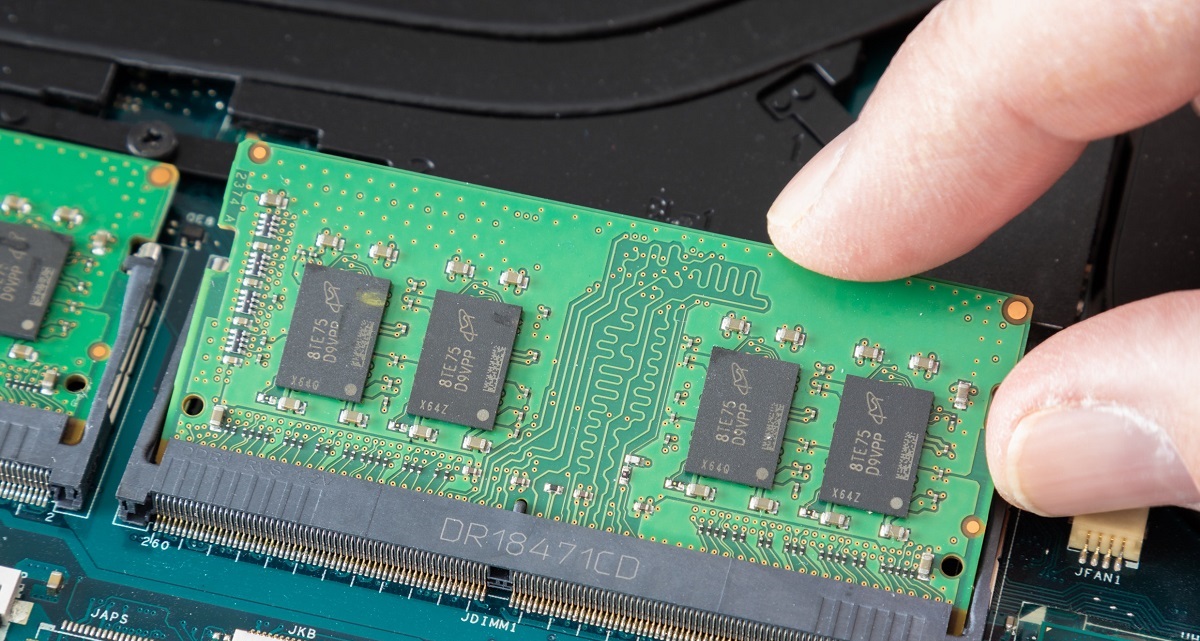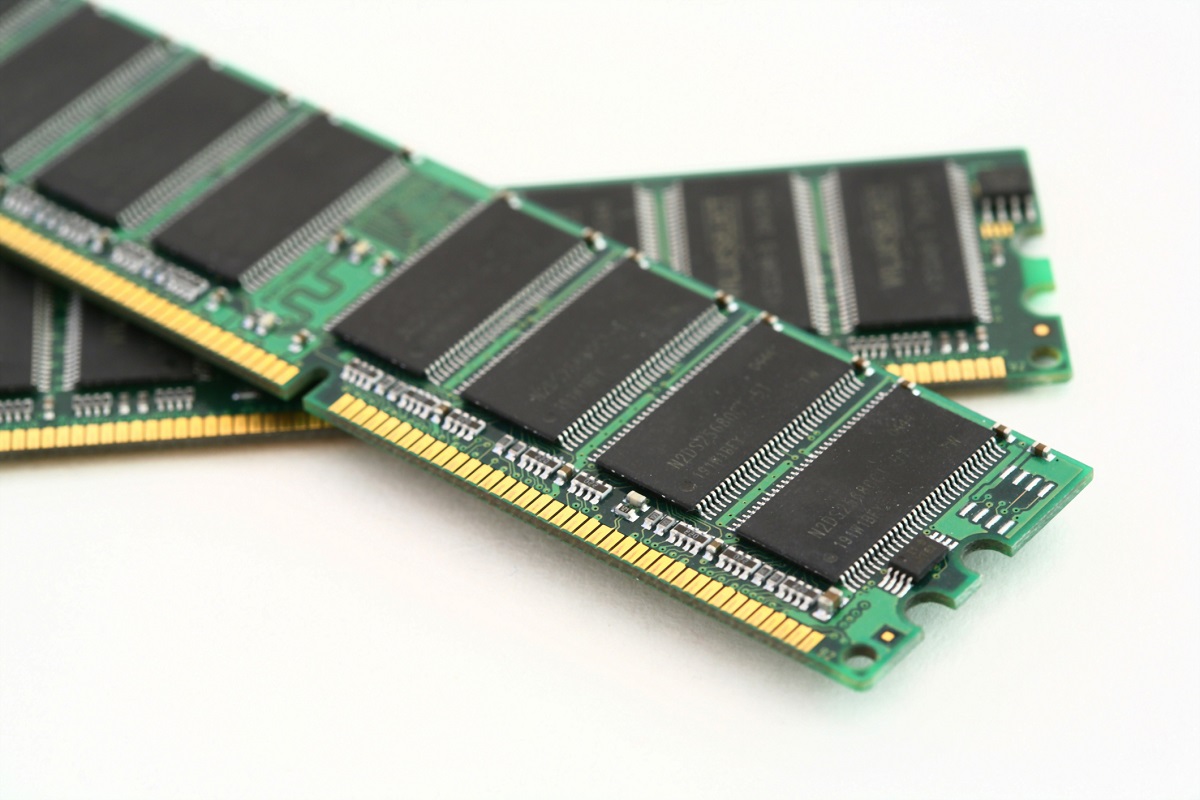Introduction
In the world of technology, RAM (Random Access Memory) plays a crucial role in the performance and speed of a computer system. It is responsible for storing and providing quick access to data being actively used by the CPU (Central Processing Unit). The amount of RAM a system has can significantly impact its ability to handle multiple tasks simultaneously and run resource-intensive applications smoothly.
When it comes to the question of how much RAM a 64-bit system can use, it’s essential to understand the fundamentals of RAM and the differences between 32-bit and 64-bit systems. In this article, we will delve into the topic of RAM limitations, specifically addressing 64-bit systems and their capacity.
Before we dive into the specifics, let’s first define what RAM is and how it functions within a computer system. RAM is a type of computer memory that allows data to be read from and written to by the CPU. Unlike internal storage devices, such as hard drives or solid-state drives, RAM provides much faster access to data, making it critical for the efficient performance of a computer.
Now, let’s shift our focus to the distinction between 32-bit and 64-bit systems. Both types refer to the operating system installed on a computer. The primary difference between them lies in the amount of memory they can support, including RAM.
A 32-bit system can use up to 4GB of RAM due to its limited addressable memory space. In contrast, a 64-bit system can accommodate significantly more RAM, providing a greater capability for multitasking and handling memory-intensive applications. However, the actual amount of RAM a 64-bit system can utilize depends on certain factors, which we will explore in detail later in this article.
With the increasing demands of modern software and the need for multitasking capabilities, 64-bit systems have become more prevalent in today’s computing landscape. Developers and power users alike have embraced these systems, appreciating their enhanced performance and ability to manage higher amounts of RAM.
So, if you’re wondering how much RAM a 64-bit system can use, keep reading as we uncover the factors that determine the limitations and explore how to check the maximum RAM supported by your specific system.
What is RAM?
RAM, or Random Access Memory, is a vital component of a computer system that contributes to its overall performance and speed. Unlike permanent storage devices like hard drives or SSDs, RAM is volatile memory that provides temporary storage for data that the CPU (Central Processing Unit) needs to access quickly.
When you open a program or perform tasks on your computer, the required data is loaded into the RAM for faster retrieval by the CPU. This enables quick access and manipulation of data, resulting in smoother and more efficient computing experiences.
RAM consists of numerous small memory cells organized in a grid-like structure. Each memory cell can store a tiny piece of data, represented by a 0 or 1. These cells are further organized into rows and columns, making it easier for the CPU to locate and retrieve data when needed.
One of the crucial advantages of RAM is its high-speed data transfer rate. Unlike storage devices with mechanical parts, RAM uses electronic circuits to quickly and efficiently transfer information. This speedy nature allows the CPU to access data in a matter of nanoseconds, significantly enhancing the overall system performance.
It is important to note that RAM is a type of volatile memory, meaning it does not retain data once the computer is powered off. When you shut down your computer, the content stored in RAM is lost. This is why it is crucial to save your work on permanent storage devices like hard drives or SSDs.
The capacity of RAM refers to the amount of data it can store simultaneously. This capacity is usually measured in gigabytes (GB) or terabytes (TB). The higher the RAM capacity, the more data the computer can store and process at any given time. This is especially important when dealing with resource-intensive applications or multitasking, as it allows for better performance and smoother operation.
In summary, RAM is a form of volatile memory that provides temporary storage for data that the CPU needs to access quickly. Its high-speed data transfer rate and capacity contribute to the overall performance and efficiency of a computer system. By understanding how RAM works and its importance, you can appreciate the significance of having an adequate amount of RAM for optimal system performance.
The Difference Between 32-Bit and 64-Bit Systems
When it comes to computer systems, the terms “32-bit” and “64-bit” refer to the type of operating system installed. These terms indicate the architecture and memory addressing capabilities of the system. Understanding the difference between 32-bit and 64-bit systems is crucial when considering the amount of RAM they can utilize.
A 32-bit system can handle a maximum of 4 gigabytes (GB) of RAM. This limitation is due to the way a 32-bit system addresses memory. In a 32-bit system, the memory addresses are 32 bits long, allowing for a total of 2^32 (4,294,967,296) unique memory locations. Since each memory location can store a single byte, the maximum addressable memory is 4 GB.
On the other hand, a 64-bit system has a much larger memory addressing space. With 64 bits, the system can address up to 2^64 (18,446,744,073,709,551,616) unique memory locations. This immense memory addressing capability allows a 64-bit system to support a significantly greater amount of RAM.
One of the key advantages of 64-bit systems is their ability to utilize larger amounts of memory for various purposes. This is particularly beneficial for resource-intensive applications, such as video editing, 3D rendering, virtualization, and gaming, that require substantial amounts of RAM to perform optimally.
In addition to its increased memory addressing capabilities, a 64-bit system offers other advantages over its 32-bit counterpart. These include improved performance, better security features, and enhanced compatibility with modern software and technologies.
However, it’s important to note that the benefits of a 64-bit system can only be fully realized if the hardware and software are designed to take advantage of its capabilities. For example, to utilize more than 4 GB of RAM in a 64-bit system, you need to have a 64-bit operating system installed, as well as compatible hardware and software.
In summary, the primary distinction between 32-bit and 64-bit systems lies in their memory addressing capabilities. A 32-bit system can address a maximum of 4 GB of RAM, while a 64-bit system can handle significantly larger memory capacities. The decision to use a 64-bit system depends on the specific requirements of your computing needs, such as the nature of the applications you use and the amount of RAM you require for optimal performance.
Addressable Memory Limitations of 32-Bit Systems
A 32-bit system, both in terms of the processor and operating system, has inherent limitations when it comes to the amount of memory it can address. These limitations stem from the underlying architecture and the way memory addresses are represented in a 32-bit system.
In a 32-bit system, the memory addresses are represented by 32 bits, which means they can range from 0 to 2^32-1 (4,294,967,295). Each memory address represents a unique location in memory where data can be stored or retrieved.
This addressing scheme sets a maximum limit on the amount of memory that can be directly accessed by the CPU in a 32-bit system. Since each memory location can store a single byte of data, the maximum addressable memory is 2^32 bytes, which is 4 gigabytes (GB).
It’s important to note that this 4 GB limitation is not exclusive to RAM alone. It includes all memory mappings, including memory-mapped I/O devices and other hardware resources. Therefore, the actual amount of usable RAM in a 32-bit system may be slightly lower than 4 GB, depending on the system configuration and hardware requirements.
Although 4 GB may seem like a significant amount of memory, it can become a limitation for certain applications and use cases. This is especially true as software and operating systems become more resource-intensive and demand larger amounts of memory to function efficiently.
While the 4 GB limit can be sufficient for everyday tasks, it may fall short when running memory-intensive applications like video editing software, complex simulations, or virtualization environments. These applications often require access to larger amounts of memory to process and manipulate data effectively.
In order to utilize more than 4 GB of RAM, you would need to transition to a 64-bit system. The expanded memory addressing capabilities of 64-bit systems allow them to support significantly higher amounts of RAM, enabling better performance and enhanced multitasking capabilities.
In summary, the addressable memory limitations of 32-bit systems stem from the 32-bit memory addressing architecture. With a maximum addressable memory of 4 GB, 32-bit systems can sometimes struggle to meet the demanding memory requirements of modern applications. Transitioning to a 64-bit system allows for more extensive memory addressing capabilities, enabling the support of larger amounts of RAM and facilitating better performance in memory-intensive tasks.
Advantages of 64-Bit Systems
64-bit systems, with their increased memory addressing capabilities, offer several advantages over their 32-bit counterparts. These advantages contribute to better performance, improved security, and enhanced compatibility with modern software and technologies. Let’s explore some of the key benefits of using a 64-bit system.
1. Expanded Memory Support: One of the primary advantages of 64-bit systems is their ability to handle and utilize larger amounts of RAM. This is particularly beneficial for memory-intensive tasks, such as running complex simulations, working with large datasets, or multitasking with resource-hungry applications. With the ability to support more RAM, 64-bit systems can provide faster and more efficient computing experiences.
2. Improved Performance: The increased memory addressing capabilities of 64-bit systems can result in improved performance across various aspects of computing. Applications that leverage the larger memory address space can operate more smoothly, enabling faster data processing and reduced loading times. This is especially noticeable when dealing with multimedia tasks, gaming, or running multiple programs simultaneously.
3. Better Security: 64-bit systems offer improved security features compared to their 32-bit counterparts. The larger memory address space makes it more challenging for attackers to exploit vulnerabilities in the system. Additionally, 64-bit systems often include enhanced data execution prevention (DEP) mechanisms and other security enhancements, which help protect against malicious attacks and code injection.
4. Enhanced Compatibility: As technology advances, software and hardware are developed with an emphasis on 64-bit compatibility. By using a 64-bit system, you can ensure better compatibility with the latest software releases and hardware advancements. This compatibility can lead to a smoother and more seamless computing experience, as you can take full advantage of new features and optimizations.
5. Future-Proofing: 64-bit systems are becoming increasingly prevalent in the computing world. As software and technologies continue to evolve, there is a growing shift towards harnessing the capabilities of 64-bit architectures. By choosing a 64-bit system, you are future-proofing your computing setup, ensuring compatibility with upcoming applications, updates, and advancements in the technology landscape.
These advantages make 64-bit systems the preferred choice for many users, especially those who engage in demanding tasks or rely on memory-intensive applications. However, it’s essential to consider the specific needs and requirements of your computing setup to determine if a 64-bit system is the right fit.
In summary, 64-bit systems offer expanded memory support, improved performance, enhanced security, and better compatibility with modern software and technologies. These advantages make them a preferred choice for users seeking optimized computing experiences and the ability to leverage larger amounts of RAM for memory-intensive tasks.
Maximum RAM Limit of 64-Bit Systems
The maximum limit of RAM that a 64-bit system can support is much higher than the 4 GB limitation of a 32-bit system. While the exact maximum RAM limit can vary depending on multiple factors, such as the operating system and hardware configuration, 64-bit systems have the potential to handle significantly larger amounts of memory.
Theoretically, a 64-bit system can address up to 2^64 (18,446,744,073,709,551,616) unique memory locations. However, the practical maximum RAM limit is often influenced by various factors, including the specific operating system version and edition, motherboard capabilities, chipset limitations, and the number of memory slots available.
For most consumer-grade 64-bit operating systems, such as Windows or macOS, the maximum RAM limit typically ranges from 128 GB to 18.4 million TB (terabytes), though the latter is well beyond the current technological capabilities. These limits are more than sufficient for the majority of users, including power users, gamers, and content creators who require substantial amounts of RAM for their resource-intensive tasks.
It’s important to note that the maximum RAM limit is determined by the operating system rather than the physical limitation of the 64-bit architecture. While a 64-bit system has the potential to support massive amounts of RAM, the operating system may impose its own limitations.
In addition to the operating system, the motherboard plays a crucial role in determining the maximum RAM limit. The motherboard’s memory slots, chipset, and BIOS firmware all influence the maximum amount of RAM that can be installed and recognized by the system. It’s crucial to consult the motherboard manufacturer’s documentation or specifications to determine the supported RAM capacities.
For professional-grade systems or servers, the maximum supported RAM can be significantly higher. These specialized systems may have the ability to handle several terabytes or even petabytes of RAM, making them suitable for data centers, scientific computing, or other specialized applications that demand extensive memory resources.
Ultimately, the practical maximum RAM limit of a 64-bit system depends on various factors, including the operating system, motherboard capabilities, and the specific hardware configuration. It is important to consider these factors when planning to upgrade the RAM in your system or when purchasing a new computer.
In summary, the maximum RAM limit of a 64-bit system is determined by multiple factors, including the operating system version, motherboard capabilities, and chipset limitations. While the theoretical limit is immense, the practical maximum RAM capacity typically ranges from 128 GB to millions of terabytes, depending on the specific hardware and software configuration. Always consult the documentation and specifications of your operating system and motherboard to determine the maximum RAM your system can support.
Factors Affecting the Limitation
While 64-bit systems have the potential to support larger amounts of RAM compared to their 32-bit counterparts, several factors can affect the actual limitation. It is important to consider these factors when determining the maximum RAM capacity of a 64-bit system:
1. Operating System: The operating system plays a crucial role in determining the maximum amount of RAM that can be recognized and utilized. Different versions and editions of an operating system may have varying limitations on the maximum supported RAM. For example, the consumer editions of Windows 10 have different maximum RAM limits compared to Windows Server editions designed for more demanding server environments.
2. Hardware Limitations: The hardware configuration of the system, particularly the motherboard, can influence the maximum RAM limitation. Factors such as the number of memory slots available, the chipset used, and the BIOS firmware all impact the system’s ability to recognize and utilize RAM. It is essential to consult the motherboard manufacturer’s documentation or specifications to determine the supported RAM capacities.
3. CPU Architecture: Although the primary focus is on the 64-bit system’s addressing capabilities, the CPU architecture can also affect the maximum RAM limitation. Some older processors may have limitations on the amount of RAM they can handle, even if the operating system and motherboard support larger capacities. Ensuring compatibility between the CPU and motherboard is crucial when determining the maximum RAM limit.
4. System Configuration: The overall system configuration, including the combination of hardware components, can influence the maximum RAM capacity. Factors such as the type and speed of the RAM modules, the total number of RAM modules installed, and the system’s ability to handle higher frequencies or capacities can impact the maximum supported RAM.
5. Software Applications: Certain software applications, especially older and legacy applications, may have limitations on the maximum RAM they can effectively utilize. While these limitations are becoming less common as software is increasingly developed for 64-bit systems, it’s important to be aware of any software-specific restrictions that may affect the maximum RAM usage.
6. Budget and Practicality: While theoretically massive amounts of RAM can be supported by 64-bit systems, practicality and budget constraints must be taken into account. The cost and availability of higher-capacity RAM modules can impact the decision to maximize the RAM capacity. It’s important to strike a balance between the required memory for optimal performance and the cost-effectiveness of the upgrade.
In summary, several factors affect the maximum RAM limitation of a 64-bit system. These factors include the operating system’s limitations, the hardware configuration, the CPU architecture, the system configuration, software application restrictions, and practical considerations such as budget and feasibility. Understanding these factors is essential when determining the maximum RAM capacity your system can support and effectively utilize.
Operating System Limitations
The maximum amount of RAM that a 64-bit system can support is largely determined by the limitations imposed by the operating system. While 64-bit systems have the potential to address massive amounts of memory, the specific version and edition of the operating system can affect the maximum supported RAM capacity.
Consumer editions of popular operating systems like Windows or macOS often have varying limitations on the maximum supported RAM. For example, the maximum RAM limit for Windows 10 Home is 128 GB, while Windows 10 Professional and Enterprise editions can support up to 2 terabytes (TB) of RAM. Similarly, macOS varies in its support for RAM, with the latest versions supporting up to 128 GB or more.
It’s important to note that these limits are defined by the specific licensing terms of the operating system versions and are often influenced by factors such as market segmentation, target audience, and the intended use cases. Server editions of operating systems, such as Windows Server or Linux distributions, are designed for more demanding server environments and can usually support significantly larger amounts of RAM, ranging from hundreds of gigabytes to terabytes.
Additionally, the physical memory management features implemented within an operating system can impact the maximum supported RAM. These features include physical address extensions (PAE) and page table structures, which enable the operating system to efficiently manage larger memory capabilities. The support and implementation of these features may vary across different operating systems.
It’s important to consult the documentation and specifications of the specific operating system version and edition you are using to determine the maximum RAM limit. Operating system developers often publish this information on their official websites, and it can also be found in system requirements or technical documentation.
Beyond the operating system itself, it’s essential to consider the limitations and recommendations set by software applications. Some applications, especially older or legacy software, may have their own limitations on the maximum amount of RAM they can effectively utilize. While these limitations are becoming less common as software is increasingly developed for 64-bit systems, it’s important to check the documentation or websites of specific applications if they have any RAM restrictions.
In summary, the maximum RAM limitation of a 64-bit system is influenced by the operating system’s specific version and edition. Consumer editions often have varying limits, while server editions are designed for larger memory requirements. Understanding the operating system’s limitations, in conjunction with hardware considerations, is essential when determining the maximum RAM capacity supported by your system.
How to Check the Maximum RAM Supported by Your System
Before upgrading the RAM in your system or purchasing a new computer, it is crucial to determine the maximum RAM supported by your system. Here are several methods you can use to check the maximum RAM capacity:
1. System Information Tool: Most operating systems provide a built-in System Information tool that displays detailed hardware and software information. On Windows, you can access this tool by typing “msinfo32” in the Run dialog box or search bar. On macOS, go to the Apple menu, select “About This Mac,” and then click on the “System Report” button. The System Information tool typically includes a section that specifies the maximum supported RAM capacity.
2. Motherboard Documentation: Consult the documentation or specifications of your motherboard. The motherboard manufacturer’s website often provides detailed information about the maximum RAM capacity supported by the specific model. Look for the maximum supported memory modules, speed, and capacity information to determine the upper limit of RAM that can be installed in your system.
3. Crucial or Other Online Tools: Utilize online tools provided by memory manufacturers like Crucial or other trusted sources. These tools often have a system scanner feature that detects your system’s hardware configuration and provides detailed information about the maximum supported RAM capacity and compatible memory modules.
4. CPU-Z or Speccy: CPU-Z and Speccy are popular system monitoring tools that provide detailed hardware specifications. These tools can identify your motherboard model and provide information about the maximum supported RAM capacity. They also offer additional hardware details that can be useful for system analysis.
5. Manufacturer Support: Reach out to the manufacturer’s customer support for your computer or motherboard. They can provide detailed information about the maximum supported RAM capacity for your specific model and may be able to answer any additional questions you have about upgrading the RAM.
6. Internet Research: Lastly, conducting online research can provide valuable insights into the maximum RAM limits for specific computers or motherboards. User forums, hardware review websites, and technical documentation can offer helpful advice and information from others who have tested the limits of their systems.
By using these methods, you can determine the maximum RAM supported by your system and make informed decisions when upgrading your RAM. Remember to take into account any limitations imposed by the operating system, motherboard, and budget constraints to ensure a compatible and suitable upgrade.
In summary, several methods, such as using the system information tool, checking motherboard documentation, utilizing online tools, using system monitoring software, contacting manufacturer support, and conducting online research, can help you determine the maximum RAM capacity supported by your system. By gathering this information, you can make informed decisions when upgrading your system’s RAM.
Conclusion
Understanding the limitations and capabilities of RAM in 32-bit and 64-bit systems is crucial for optimizing system performance and ensuring compatibility with modern software and technologies.
32-bit systems have a maximum RAM limit of 4 GB due to their limited memory addressing capabilities. In contrast, 64-bit systems can support significantly larger amounts of RAM, ranging from hundreds of gigabytes to terabytes, depending on factors such as the specific operating system, hardware configuration, and motherboard capabilities.
The advantages of 64-bit systems, including expanded memory support, improved performance, enhanced security, and better compatibility with software and hardware, make them the preferred choice for users with memory-intensive tasks or resource-demanding applications.
Checking the maximum RAM capacity supported by your system is essential before upgrading or purchasing new RAM. Using tools such as the system information tool, motherboard documentation, online tools, system monitoring software, manufacturer support, and online research can provide valuable insights into your system’s capabilities and limitations.
By understanding the differences between 32-bit and 64-bit systems, the advantages of 64-bit systems, and the factors affecting RAM limitations, you can make informed decisions when it comes to upgrading your system’s RAM and achieving optimal performance.
Remember to consider the specific requirements of your computing needs, budget constraints, and consult the documentation and specifications of your hardware and software to ensure compatibility and make the most appropriate decisions.







